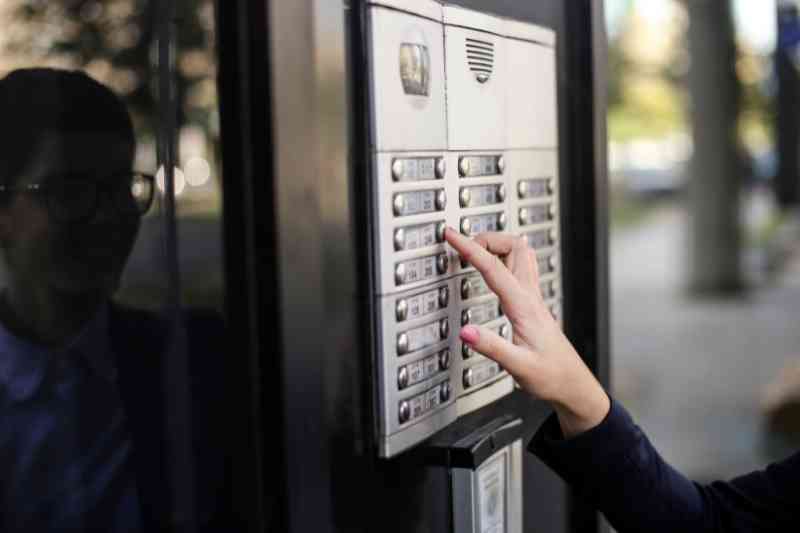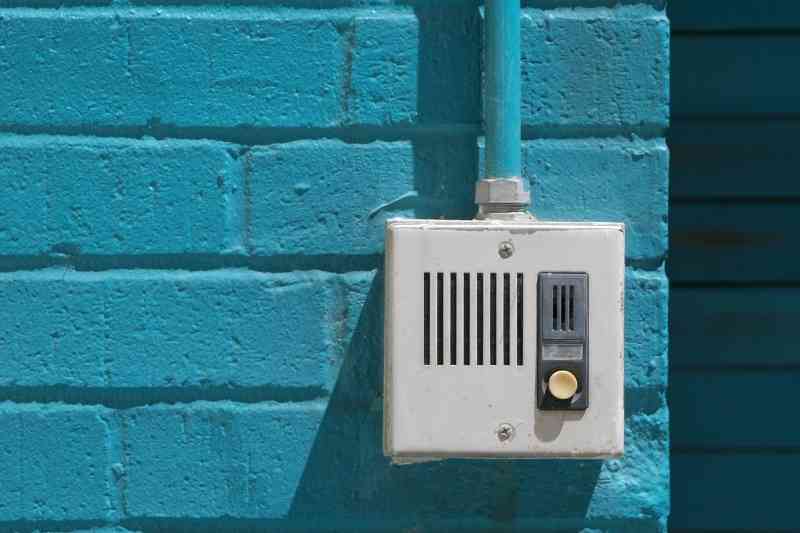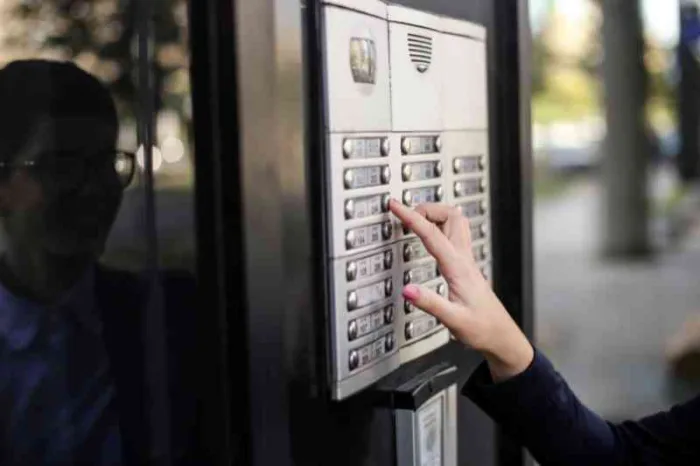Key takeaways:
- Residential telephone entry systems enable tenants to communicate with visitors and manage property access via phone lines.
- These systems often lack features like recurring access management, delivery access, and are challenging to maintain due to the need for manual updates and reliance on outdated technology.
- Modern entry solutions, such as video intercom systems, offer enhanced security, convenience, and remote management capabilities, making them a superior choice over traditional telephone entry systems.

Whether you’re looking to upgrade the entry system for your residential building or purchase a new one entirely, you have many options. You might be wondering how a residential telephone entry system stacks up.
Is a telephone entry system the right way to meet your residents’ and staff’s property access needs? Read on to find out. This post will explain what a residential telephone system is and how it works. Then, we’ll help you look for alternatives to add convenience and enhance your building’s access experience.
This post covers:
- What is a residential telephone entry system?
- How does a residential telephone entry system work?
- Residential telephone entry system limitations
- Alternatives to residential telephone entry systems
What is a residential telephone entry system?
A residential telephone entry system is a device that enables tenants of a residential property to speak to and manage access for visitors. Operating over phone lines, telephone entry systems allow visitors to call a resident to request access. Residents answer the call like any other phone call and open the door for their guests by pressing an ‘open door’ button.
Residential buildings have distinct access control needs. For example, some apartment buildings have gated entrances. These properties need telephone gate entry systems to create a singular access control system. Conversely, other buildings need to control access at the front door. A residential telephone entry system works in both scenarios.
When every resident receives guests and package deliveries daily, your building needs an entry system that lets residents buzz in guests without forcing them to go down to the front door. For the most part, telephone entry systems provide this remote access solution.
Residential telephone entry systems have three parts:
- Base station. Also known as master stations, base stations are installed outdoors at the entrances to a residential property. Base stations contain directories that visitors use to select the resident they’re visiting.
- Substations. Substations are devices that residents use to speak to guests and grant them access. Sometimes, substations are in-unit hardware intended solely for use as part of a telephone entry system. On the other hand, other residential telephone entry systems allow landlines or cell phones to act as substations.
- Door strike. At first, when a resident grants access to a visitor, the base station sends a signal to the entry system’s electric door strike. Then, the base station instructs the door strike to release, unlocking the door and allowing the guest to enter.
How does a residential telephone entry system work?
Residential telephone entry systems use telephone-based technology to facilitate audio communication between visitors and residents. Just as technological advances changed how we speak to each other on the phone, those same advances transformed the field of access control.
For decades, telephone entry systems required copper wires and landline phones. In the latter half of the 20th century, however, the invention of cell phone technology and the internet allowed wireless telephone entry systems to communicate using cellular networks or the Voice over Internet Protocol (VoIP).
Here’s what happens when a visitor uses a residential entry system:
- Visitor uses base station to call a resident. Visitors usually select the resident they’re visiting. However, some telephone systems route all calls to a building staff member who then connects the visitor to a resident.
- Base station connects to the correct substation. Whether the entry system is using telephone wires, a cell network, or the internet, the base station facilitates communication between a resident and their guest.
- Resident speaks to guest using the substation. Some telephone entry system with cameras allow residents to see and hear their guests. However, most do not offer two-way video communication. So, a resident would be able to see their guest, but the guest wouldn’t be able to see the resident.
- Resident uses the substation to grant access. If the resident uses their phone, they press ‘9’ to grant access to their visitor.
- Base station signals the door strike. Specifically, after the resident has pressed ‘9,’ the door strike releases, and the resident can open the door.
Watch how ButterflyMX works:
Residential telephone entry system limitations
Residential telephone entry systems fulfill rudimentary access control needs. But today’s residents expect functionality and flexibility that telephone entry systems can’t provide.
Limitations of residential telephone entry systems include:
- No way to grant recurring access. Your residents likely have recurring apartment visitors, like house cleaners or dog walkers. While modern access control systems offer features like Visitor Passes that simplify recurring access, telephone entry systems force residents to keep a close eye on their entry systems at all times.
- No delivery access. Unquestionably, online deliveries and e-commerce have become incredibly prominent. Your residents — especially younger ones, like millennials and Gen Z — receive numerous deliveries throughout the week. So, they might forgo an apartment with a telephone entry system for a building whose entry system offers features like delivery passes or PINs.
- Difficult to maintain and administer. Connecting a resident’s cell phone or landline to a telephone entry system is a tedious chore that requires an outside technician. You’re better off with a cloud-based intercom that lets you easily manage your resident directory from any device.
- Lack of integrations. Telephone entry systems aren’t advanced enough to integrate with other smart building services. A lack of integrations negatively impacts staff and residents alike. In addition, tech-friendly residents who expect integrations with smart locks or elevators will be disappointed to find a traditional telephone system without those integration capabilities.

Alternatives to residential telephone entry systems
Residential telephone entry systems have indeed kept up with the times in terms of using new technologies to carry audio data. However, they remain an outdated, analog-based way to grant access. For a truly modern access experience, you need an IP-based entry system.
A system that fully embraces the innovations of the 21st century, such as ButterflyMX, is the best alternative to a telephone entry system.
ButterflyMX is a mobile access control system that allows residents to open doors with their smartphones. We take the best feature of cellular telephone entry systems — their compatibility with cell phones — and elevate them by offering a powerful mobile app and a proprietary operating system.
ButterflyMX features include:
- Integrations. With ButterflyMX, you can integrate your intercom with your property management software. The powerful ButterflyMX OS automatically documents changes as residents move in and out, freeing your staff from manually updating your entry system.
- Delivery passes. ButterflyMX allows residents to assign one-time delivery passes to couriers. This lessens the load of package-related access management for staff and residents while increasing convenience for couriers.
- Visitor Passes. Residents can send Visitor Passes to any of their guests for simplified access. In addition, for added security, residents can configure these keys to stop functioning after a certain period of time, or only work during certain times or certain days.

Get your free quote!
Fill in the form below, and we'll email you right back.
Want a free quote?
Fill in the form below, and we'll email you right back.
You’ll be redirected shortly...






